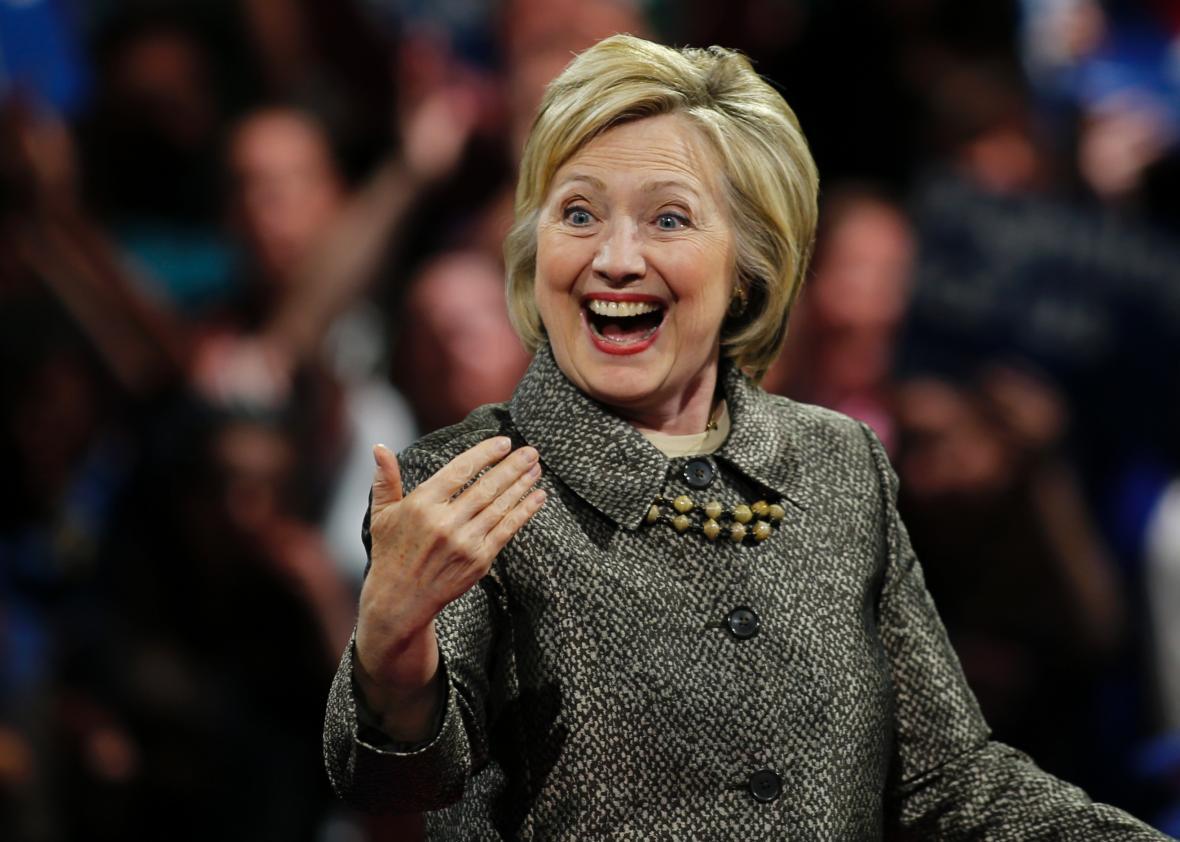So, yeah, this is really happening. Donald Trump is now the presumptive Republican nominee, and Hillary Clinton is the presumptive Democratic one. They will enter the general election as the two most disliked major presidential candidates in history, suggesting the country is in for a long, nasty, expensive six months between now and Election Day.
Now that we’ve taken a moment to acknowledge the reality that a dangerously unstable demagogue is one step away from the highest office in the land, the obvious question is: What are the chances Trump can actually get there? Here at Slate, there is some difference of opinion on just how worried we should be about his uncanny ability to defy the normal laws of politics and whether he could (once again) make fools of all of us for failing to grasp the effectiveness of his particular brand of grievance politics. But this much is clear: He’ll enter a general election matchup with Clinton as a big underdog.
Pollsters have been asking about a possible matchup between the two for the better part of a year, and the results have consistently showed Clinton ahead. Of the more than 70 surveys taken since the start of 2016, Trump has led in only five of them, three of which came in an early cluster at the start of January. According to Huffington Post’s running average, Hillary leads the Donald by nearly 7 points:
It’s still early enough where we shouldn’t read too much into such hypothetical polling—traditionally, these type of surveys aren’t all that predictive until after the conventions—but it’s hard to think of a previous matchup that involved two candidates who were already as well-known to the American public as Trump and Clinton are. When Americans are asked about their feelings about either candidate, typically only about 3 to 4 percent say they don’t know enough about them to have an opinion. That suggests the barrage of attack ads that are on the way are more likely to reinforce current opinions than change them.
There’s also the fundamentals of the race, most of which currently favor Clinton: The unemployment rate is down to 5 percent (more than 3 points lower than it was four years ago), and President Obama’s job approval and favorability ratings are both now above water. And, perhaps as important as anything else, the electoral map looks particularly friendly to Democrats. As the Washington Post’s Chris Cillizza noted earlier this week, if Clinton can win the 19 states (plus the District of Columbia) that have voted for the Democratic nominee in each of the last six presidential elections, she can clinch the election simply by claiming Florida. The Cook Political Report sees a similarly Clinton-friendly map.
Hillary is far from the perfect candidate, of course, but Trump is currently canceling out many of her weaknesses. She is unpopular; he is more unpopular. She has a problem with independents; he has a worse one. She still needs to unite her party after combative primary; he faces an even larger challenge on that front. Americans don’t trust her; Americans are actually scared of him. And even Trump’s perceived strengths aren’t actually as strong as they’re often portrayed. As the New York Time’s Nate Cohn notes, Trump is currently faring worse than Mitt Romney did four years ago among white voters in the battleground states that will likely decide the election. Given the horrible things he’s said about Hispanics, blacks, and Muslims, it’s hard to imagine him faring better with nonwhite voters. And, of course, there’s the one issue on which Trump’s been remarkably consistent, his hatred of women, a demographic that actually accounts for a majority of voters.
In short: Things don’t look good for Trump. Am I willing to call the election six months out? No. Considering the media’s attempts to domesticate Trump in the name of political narrative, I wouldn’t be surprised if Trump closes the gap—however briefly—in head-to-head polling with Clinton in the weeks to come, particularly if Bernie Sanders continues to hang around and force her to campaign on two different fronts. And despite all the #NeverTrump playacting, much of the GOP establishment is already beginning to rally around the celebrity businessman, and many conservative voters will likely do the same when they’re reminded that the coming election will decide both the White House and the Supreme Court. That sets up the possibility that we’re heading into a relatively run-of-the-mill partisan election despite the fact that one of the candidates is anything but a run-of-the-mill politician. Still, a run-of-the-mill partisan election favors Hillary.
Read more of Slate’s coverage of the 2016 campaign.
